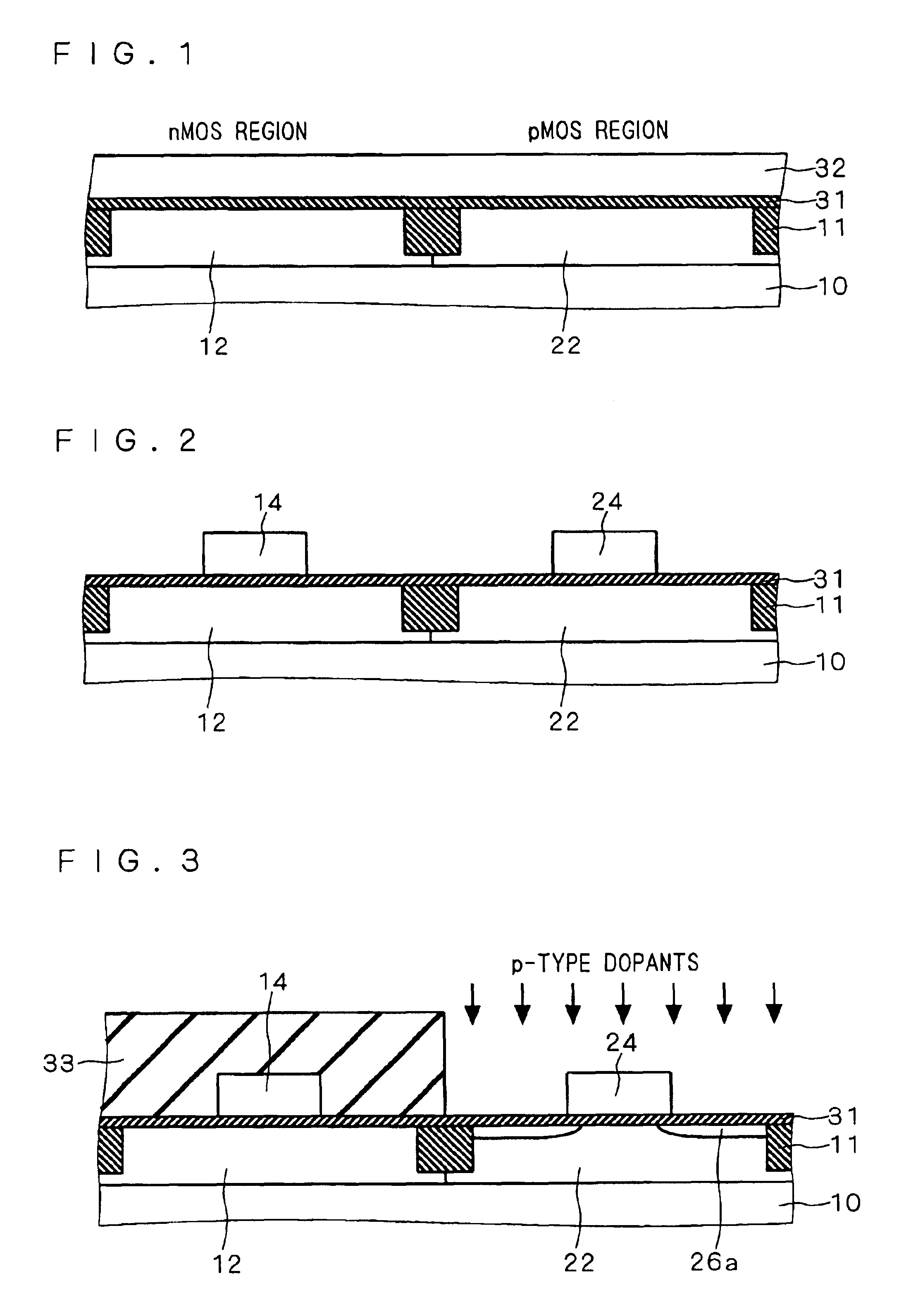Semiconductor device including gate electrode for applying tensile stress to silicon substrate, and method of manufacturing the same
a technology of tensile stress and silicon substrate, which is applied in the direction of semiconductors, semiconductor devices, electrical equipment, etc., can solve the problems of inapplicability to sti, insufficient activation annealing, and large number of problems to be solved, so as to improve carrier mobility and simplify manufacturing steps
- Summary
- Abstract
- Description
- Claims
- Application Information
AI Technical Summary
Benefits of technology
Problems solved by technology
Method used
Image
Examples
Embodiment Construction
[0026]First Preferred Embodiment
[0027]The present inventors have found that when amorphous silicon including a large number of ions implanted therein undergoes thermal processing to form recrystallized polycrystalline silicon (polysilicon), volume expansion of silicon occurs. It has also been found that the amount of expansion of silicon is controlled largely by the mass number of ions implanted therein, and more particularly, that the amount of expansion increases as the mass number of implanted ions becomes larger (more specifically, 70 or more). It has been confirmed as well that the amount of expansion increases as the implant dose of ions increases.
[0028]FIGS. 1 through 9 illustrate steps of manufacturing a semiconductor device according to the first preferred embodiment of the present invention. In each one of FIGS. 1 through 9, the left half shows a region for forming an nMOS transistor (hereinafter called as an “nMOS region”), and the right half shows a region for forming a ...
PUM
 Login to View More
Login to View More Abstract
Description
Claims
Application Information
 Login to View More
Login to View More - R&D
- Intellectual Property
- Life Sciences
- Materials
- Tech Scout
- Unparalleled Data Quality
- Higher Quality Content
- 60% Fewer Hallucinations
Browse by: Latest US Patents, China's latest patents, Technical Efficacy Thesaurus, Application Domain, Technology Topic, Popular Technical Reports.
© 2025 PatSnap. All rights reserved.Legal|Privacy policy|Modern Slavery Act Transparency Statement|Sitemap|About US| Contact US: help@patsnap.com



